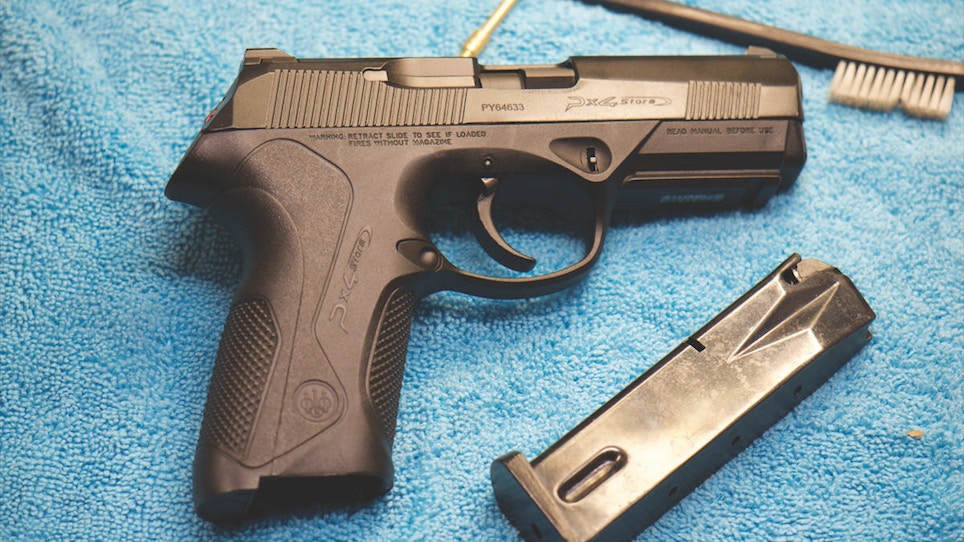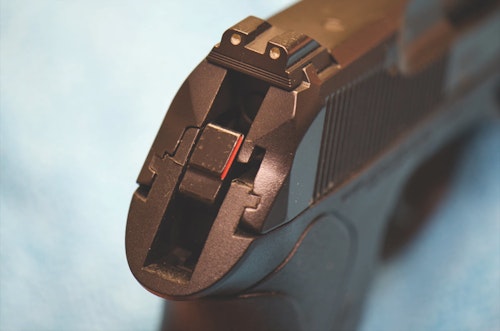I admit that I didn’t know much about the inner workings of guns when I started. All I knew was what worked for me and what I liked. I’ve since learned to appreciate many different types of firearms, even if my preferences haven’t changed much through the years. One of the more interesting things I’ve encountered through the years was the invention of light double-action triggers and the different designs used in making them.
The idea behind the light double-action trigger is to provide the longer travel of a double-action pistol while eliminating the heaviness traditionally experienced with double-action guns. To my knowledge, Para-Ordnance was the first to mass-produce a working light double-action gun. It carried the familiar looks and operation of a 1911 except for the wide frame to accommodate more rounds and the top-pivoting trigger, like a traditional double action. The hammer was also bobbed, and there was no way to carry it cocked and locked as expected.
When I first saw it, I didn’t know what it was and picked it up out of curiosity. I worked the slide and was surprised to see the hammer follow the slide forward. That was unexpected. But then real magic appeared when I pulled the trigger. The long trigger pull was smooth, so I was surprised to see that the hammer was coming back as I pulled the trigger. The pull was so light that I couldn’t understand how it was enough to cock the hammer. It eventually came to the “wall” and broke like a traditional 1911.
I was so impressed that I purchased that gun before anyone else could touch it. I didn’t understand what sort of sorcery was behind it. I just knew that it was going home with me. It became one of my favorite guns. I’d still own it today if a close friend hadn’t begged to buy it so he could turn it into a competition gun.
Para-Ordinance became Para USA after being purchased by Remington, and the light double-actions are no longer being produced. Fortunately, the spirit of the light double lives on through other manufacturers. Sig makes a light double design referred to as the Double Action Kellerman, named for its designer. H&K calls theirs the Law Enforcement Modified trigger. There may be others, but when these two heavyweights produce them, you can be sure they still have a place in today’s market. This is particularly true in law enforcement. Until very recent times, Beretta also produced a Px4 Type C (referred to as a Constant Action trigger) for law enforcement, which accomplished the same thing. Type C is essentially a double-action-only gun modified to fire from a half-cocked position.
Cutting Weight
These guns are all designed with one principle in mind — take away the heavy spring pressure required to cock the hammer before it can fire the weapon while still maintaining the long trigger pull to fight accidental discharges. The solution that all of them adopted was to pre-cock the hammer so that the only real weight is at the point where the trigger breaks. This prevents the shooter from having to overcome that weight. I say it is a hammer, but there are two hammers in all of them except for the Beretta. There’s an inner hammer (more like a cam) and an outer one. The outer one is seen when the trigger is pulled. The internal hammer is what holds the mainspring under tension. There is only a light spring pressure until the external hammer engages the inner one and fires the gun. All of this remains hidden from view.
In contrast to the others, the pre-cocked hammer is easy to see on the Px4. There’s less mystery, but the effect is the same. By the time any actual trigger weight is felt, the finger is bent into the strongest part of its arc, so even that feels light.
I have many friends who hold strong opinions about whether there’s even a place for light doubles today. One of them is a die-hard 1911 fan who says the LDA answers a question that doesn’t exist. When asked why most departments won’t allow 1911s as duty guns, he admitted that the light double-action might be relevant. I’ve heard arguments that they are slower and more challenging to shoot, but it’s worth noting that the H&K competitive shooting team uses LEM guns when competing.
Could modern light double-action pistols be the answer in today’s market where striker-fired guns like Glocks, M&Ps and XDs seem to dominate the market? Are they worth recommending to new shooters? It’s a question that each person must decide for themselves, but I believe that they are credible choices for new and experienced shooters alike. Consider that the FBI did a study showing that 96% of handgun accuracy comes down to trigger pull — an area where the light double provides the most benefit.







